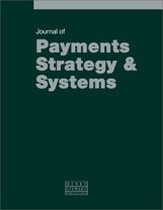SEPA Card Clearing as an open standard for card processing in the euro area
Abstract
The establishment of the Single Euro Payments Area (SEPA) for credit transfers and direct debits was finalised via Regulation (EU) 260/2012 of the European Parliament and the European Council. But without the card payment sector, the vision of a harmonised single payment market remains incomplete. A harmonised market for cards should provide a framework within which merchants in Europe can accept a variety of SEPA-compliant card brands and products, and choose from a variety of acquirers without being artificially constrained by legal, technical or procedural aspects associated with the respective card schemes. This paper focuses on SEPA Card Clearing (SCC), a project aimed at harmonisation, which is nearing completion in the acquirer-to-issuer domain. The aim of SCC is to create a new common ISO 20022 standard as an open standard (ie irrespective of a specific card scheme) for clearing and processing debit card and credit card based transactions between banks that takes into account the different market needs with respect to clearing and settling debit and credit card transactions, based on existing standards in different countries. Therefore, with SCC, a clear ‘unbundling’ of card schemes and processing can be achieved. This should support open and fair competition and, in so doing, lower the market entry barriers for new players. In technical terms, the SCC Framework is based on the SEPA Direct Debit (SDD) scheme and its concomitant SDD-message standards and business processes. The SCC Framework is freely available for any market participant in Europe, and it enables the use of one clearing infrastructure for all relevant payment instruments in the SEPA, direct debits, credit transfers and cards. Lastly, SCC also supports innovation. The special payment message container in SCC could also be used for the processing of any other type of payments (ie payments via mobile phone or biometric data).
The full article is available to subscribers to the journal.
